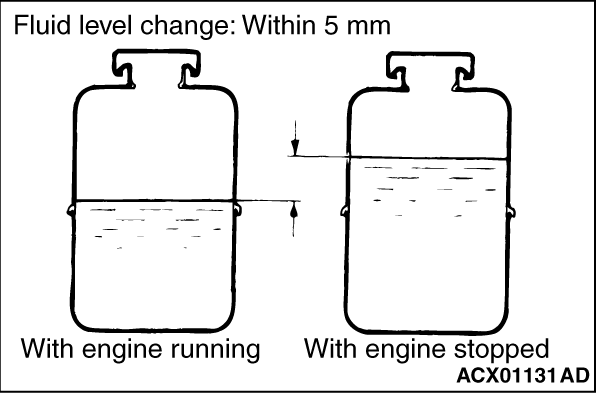|
|
1.Raise the front wheels using a jack, and support with a rigid rack.
|
|
|
2.Disconnect the starter connector
(Refer to GROUP 16 - Starter System ). ).
|
|
|
3.
| caution |
- Keep the fluid level at MIN or higher than
that during the bleeding operation.
- Since the air is atomised into the power steering fluid if the bleeding is performed
with the engine running, be sure to bleed the system while cranking the engine.
|
While cranking the engine intermittently with the starter motor several times (within
15 to 20 seconds), turn the steering wheel fully in both directions five or six times.
|
|
|
4.Connect the ignition coil connector, start the engine, and let it idle.
|
|
|
5.Turn the steering wheel fully in both directions until no bubbles can be seen in the
oil reservoir.
|
|
|
6.Make sure that the fluid is no longer milky and that the fluid level is between MAX
and MIN marks.
|
|
|
7.Make sure that the power steering fluid level in the reservoir does not change significantly
when the steering wheel is turned to the left or right side.
|

|
8.
| caution |
- If the fluid level goes up rapidly after
the engine has been stopped, the power steering system is not bled sufficiently.
- If the bleeding operation is not performed completely, the fluttering or abnormal
noise may be produced from the pump and/or flow control valve, causing the durability
performance of the pump to be reduced.
|
Check the fluid level variation between two engine conditions (engine starting and engine
stopped).
9.When the fluid level variation is 5 mm or more, the power steering system is not bled
sufficiently. In this case, bleed the system again.
|
 ).
). ).
).